What UX and UI?
UX and UI
User Interface (UI) design focuses on creating visually appealing and interactive digital interfaces that enhance the overall user experience. It encompasses elements such as icons, buttons, typography, color schemes, spacing, imagery, and responsive design to ensure fluid navigation and ease of use. Our designers strive to create seamless interactions between users and digital products, whether it’s through touchscreen interfaces on smartphones or navigation menus on websites and apps.
On the other hand, User Experience (UX) design focuses on understanding user needs, behaviors, and preferences to deliver exceptional digital experiences. UX designers optimize products for effective use by crafting intuitive and enjoyable interactions. By conducting thorough user research, our UX designers gain insights into user motivations and pain points, which informs the design process and leads to the creation of user-centric solutions.
In summary, while UI design enhances the look, feel, and interactivity of digital products, UX design ensures that these products are optimized for effective use and deliver value to users. Together, UI and UX design work hand in hand to create seamless and engaging digital experiences that resonate with users.

Scope of service:
We offer full support for the during the entirety of the project.
While focusing on the requirements and wishes which our customers bring.
For UX/UI design, we established at Visplu tailored and defined processes which help our customer in gaining full visibility and transparency about the work progress.
Process Definition UX
-
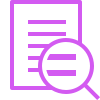
Requirements analysis and user research
A clear analysis of the customer requirements will be executed the targets and the objectives of the project will be defined. User preferences and a detailed user research will be initiated to gain insight into the target audience, this will be conduct through surveys, interviews and review sessions. Once this step is complete a detailed schedule will be agreed
-

Prototype development (wireframing and prototyping)
In this phase user personas will be defined to represent the audience furthermore a user journey map will be established to visualize the user’s interactions. Once these are validated the prototype can be created.
The prototype will be developed to demonstrate to the customer the product specifications such as layout and structure. The mockup will convey the final look and feel and the aspect of the product.
-
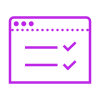
Development and testing
the first design will be further developed according to the upon agreed requirements. Once completed usability testing are executed to evaluate and check the effectiveness and the usability of the product.
-
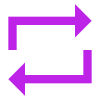
Iteration and refinement
the first design will be further developed according to the upon agreed requirements. Once completed usability testing are executed to evaluate and check the effectiveness and the usability of the product.
-

Support
We offer continuous support in case of any amendments or adaptations are required by our customer. We react in agility and flexibility to any changes or adjustments. Furthermore, we monitor the user feedback and analytics data post-launch to assess the product's performance.
Why choose Visplu?
Competitive prices
Defined process
Quality gates
Agile Methodology
Process Definition UI
-

Requirements analysis and user research
We begin by conducting thorough user research, delving into the needs, preferences, of our target audience. Next, we analyze the industry trends, best practices, and areas ripe for improvement. We then gather requirements from stakeholders, ensuring our design goals are aligned with the intended business objectives. This comprehensive research and analysis process lays the foundation for crafting user-centered UI solutions.
-
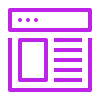
Wireframing and visualization
At the outset, we create low-fidelity wireframes, detailing the layout, structure, and functionality of the interface, with a focus on essential elements such as navigation menus and buttons. These wireframes are refined through iterative feedback and usability testing. Following this, we develop high-fidelity mockups that embody your brand's visual identity, including colors, typography, and imagery. Careful attention is paid to visual hierarchy to guide users' attention and maintain a fluid design. We ensure consistency across all interface elements to enhance usability and reinforce brand recognition.
-
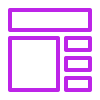
Prototyping
Finally, we construct interactive prototypes to emulate user interactions and workflows. Utilizing prototyping tools, we incorporate clickable buttons, dropdown menus, and other interactive elements. These prototypes are rigorously tested with real users to gather feedback on usability, navigation, and overall user experience, informing further refinements to the interface.
-

User Testing & Implementation
We conduct usability testing sessions with target users to evaluate interface effectiveness, identifying usability issues and areas for improvement. Based on feedback, we iterate on the design to optimize usability. Collaborating closely with developers, we ensure accurate implementation of the design, providing assets, style guides, and specifications. Regular reviews and updates ensure alignment with the original design vision.
-
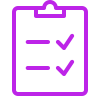
Evaluation
Our team tracks key performance metrics, including user engagement, conversion rates, and task completion times. By gathering insights from user data, we continuously inform future iterations and enhancements to the interface, ensuring an optimal user experience.
Key benefits for UX-UI
Cost Reduction
Customer Acquisition
Improved Usability
Competitive Advantage
Positive Brand Perception
Boosted Productivity
Increased User Engagement
Increased User Retention
Have questions?
Get in touch!
Adipiscing elit, sed do eiusmod tempor incididunt ut labore et dolore magna aliqua. Ut enim ad minim.
